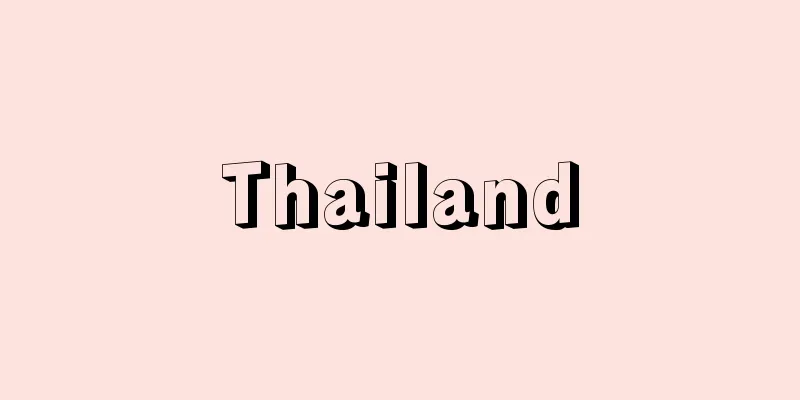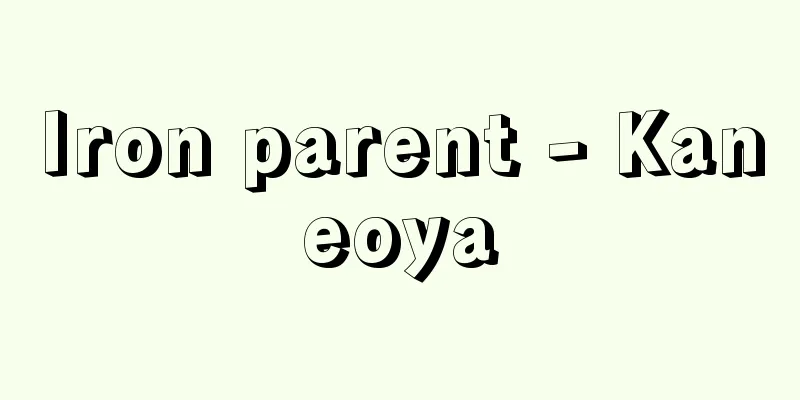Thailand

|
◎Official name: Kingdom of Thailand. ◎Area: 513,120 km2 . ◎Population: 65.48 million (2010). ◎Capital: Bangkok (6.86 million, 2006). ◎Residents: 80% Thai, 12% Chinese, Indian, Vietnamese, and minority groups such as Karen, Myo, and Yao. ◎Religion: Mostly Buddhist. ◎Language: Mostly Thai (official language), Chinese, etc. ◎Currency: Baht. ◎Head of state: King, Bhumibol Adulyadej (born 1927, ascended the throne in June 1946). ◎Prime Minister: Prayuth Chan-o-cha (provisional, inaugurated in September 2014). ◎Constitution: Effective from October 1997. Suspended by a coup in September 2006. A new constitution came into effect in August 2007. It was suspended in a coup in May 2014. * Parliament - Bicameral. Upper House (150 seats, 77 elected, 73 appointed), Lower House (500 seats, 375 constituencies, 125 proportional representation). The election in February 2014 was invalidated by a ruling from the Constitutional Court. * GDP - $260.7 billion (2008). * GDP per capita - $2,458 (2007). * Proportion of workers employed in agriculture, forestry and fishing - 54.1% (2003). * Life expectancy - 65.4 years for men, 72.1 years for women (2007). * Infant mortality rate - 11‰ (2010). * Literacy rate - 94% (2005). * * Formerly known as Siam. A constitutional kingdom in Southeast Asia. It occupies the central part of the Indochina Peninsula and faces the Gulf of Siam. The central part is the alluvial plain of the Chao Phraya (Menam) River, the eastern part is the Korat Plateau, and the northern part is mountainous, part of the Indochina Mountains. The Mekong River flows along the border with Laos. The highest peak is Mount Inthanon (2,595m). It is located in the tropics at approximately 5° to 20° north latitude, with the rainy season being from May to October and the dry season being from November to April. The majority of the inhabitants are Thai, with the rest being Malay, Mon-Khmer and Chinese. The economy is based on agriculture, with half of the inhabitants engaged in it. Rice is the main crop in the alluvial plain of the Menam River, and other crops include corn, sugarcane, rubber and jute. Forests cover about 30% of the country, and teak is an important export. Mineral resources include tin, iron and tungsten. The tsunami that followed the Sumatra earthquake in December 2004 caused serious damage to the resort island of Phuket and other areas (5,300 people killed, 2,800 missing). [History] The ancestors of the Thai people are said to have lived in the upper reaches of the Yangtze River in China before Christ, and later moved south to the Indochina Peninsula, where they established the Sukhothai Dynasty in the 13th century. The Ayutthaya Dynasty was established in the 14th century, and negotiations with Portugal, France, and other countries became active in the 17th century, with Yamada Nagamasa and other Japanese figures playing an active role. The Ayutthaya Dynasty was destroyed by the Burmese invasion in 1767, but the current Rattanakosin Dynasty (Chakri Dynasty, Bangkok Dynasty) was established in 1782. In the 19th and early 20th centuries, Thailand was invaded from both the east and west by the British and French, losing part of its territory, but maintained its independence as a buffer zone. The constitutional revolution of 1932 marked the end of absolute monarchy, and Thailand transitioned to a constitutional kingdom. However, the military has since staged multiple coups and established dictatorship, and continues to exert a great influence even in the civilian era. The head of state is King Bhumibol Adulyadej, who ascended to the throne in 1946 and is currently the longest-reigning king in the world. While the country's diplomacy is based on anti-communism, it has also strengthened solidarity with ASEAN countries and strived to promote friendship with China and Japan. In the late 1980s, Thailand achieved high economic growth, and with the inflow of foreign currency, export-oriented manufacturing industries such as textiles, food, electronic parts and electrical products, and automobiles developed. In the 1990s, a "baht economic zone" was formed that extended to Myanmar and the three Indochina countries, but the baht fell sharply during the Asian currency crisis in 1997, and Thailand was forced to receive assistance from the IMF. [Since 2000] Prime Minister Thaksin Shinawatra (then) took power after winning the general election in January 2001 and boldly implemented policies such as promoting exports by stimulating domestic demand and attracting foreign capital, large-scale public works, reforming the social insurance system, and eradicating drugs. He rebuilt the economy, which had been devastated by the currency crisis, and became the first democratically elected prime minister in modern Thai political history to complete his term. On the other hand, the introduction of top-down decision-making and Prime Minister Thaksin's own heavy-handed approach drew backlash from the traditional elite and conservative groups, and there were also rumors of abuse of power and corruption. Social movements denounced Prime Minister Thaksin in early 2006, and the election held in April of that year was boycotted by the opposition parties, which was an unusual event. The Constitutional Court subsequently ruled the election unconstitutional and invalid, and while a second election was being considered, the Thaksin administration collapsed in September 2006 in a coup led by the military, led by then Army Commander-in-Chief Sonthi. In 2008, Samat and Somchai of the Thaksin-affiliated People's Power Party became prime ministers in succession, but the Constitutional Court ordered the party to be dissolved for election violations, Somchai lost his position, and Abhisit of the Democrat Party became prime minister in December. However, political turmoil continued, with the summit of the Association of Southeast Asian Nations held in Bangkok in April 2009 being forced to be canceled due to the occupation of the airport by pro-Thaksin groups. Furthermore, in March 2010, pro-Thaksin groups held a large-scale protest rally in Bangkok, demanding the dissolution of parliament and general elections, and occupied the center of the city. In April, Prime Minister Abhisit declared a state of emergency in Bangkok and its surrounding areas, and the military opened fire on demonstrators, resulting in a tragedy with many casualties, including the death of a Japanese journalist. In May 2010, Abhisit sent in army troops, and although many casualties were sustained, he succeeded in suppressing the rally by force and eliminating the pro-Thaksin occupation. [The Yingluck Administration and its Collapse] In July 2011, the opposition Pheu Thai Party (the successor to the People's Power Party, a Thaksin faction) won the election for the House of Representatives of the National Assembly, with Thaksin's sister Yingluck Shinawatra as its candidate for prime minister, and Yingluck became Thailand's first female prime minister and the 37th prime minister in August. Shortly after taking office, Thailand was hit by major floods in the northern and central regions, mainly in the Chao Phraya River basin, which dealt a blow to the administration, which advocated national reconciliation and poverty reduction, but Yingluck established her leadership by prioritizing domestic affairs. After recovery and reconstruction from the floods, domestic demand led to a recovery in economic activity, and in 2012, the economy grew by 6.5%. In 2013, domestic demand slumped due to a backlash from the end of tax breaks for car buyers and the end of investment in recovery and reconstruction from the floods, and growth was limited to 2.9%. The administration had switched to an active diplomacy, focusing on the economy, and was considered to be heading toward stability. However, in November 2013, the ruling Pheu Thai Party rammed through a bill in the lower house that included an amnesty for Thaksin, and anti-Thaksin forces stepped up their offensive, demanding Yingluck's resignation, and the political situation suddenly became unstable. The government declared a state of emergency throughout Bangkok. Yingluck dissolved the lower house and went ahead with a general election in February 2014, but in March the Thai Constitutional Court ruled that the election was unconstitutional because "the election could not be held simultaneously across the country" and "parliament could not be convened and opened within 30 days of the election date." On May 7, the Constitutional Court ruled that Prime Minister Yingluck had abused her power over personnel transfers of civil servants, and she was forced to resign. In the early hours of May 20, Army Commander-in-Chief Prayut Chan-o-cha declared martial law nationwide, and the military led a dialogue bringing together opposing camps, but no compromise was reached. On the evening of May 22nd, the military-led National Council for Peace and Order (NCPO) declared that it had taken full control of the country. On May 30th, the NCPO announced a roadmap for the return to civilian rule, consisting of the first three phases and covering a period of just over a year. On the following day, June 27th, the NCPO announced a political process based on the roadmap, which calls for the promulgation of an interim constitution by the end of July, the establishment of a Legislative Council and an interim cabinet in September, and a reform council in October, the promulgation of a new constitution by July 2015, approximately one year after the interim constitution, and the holding of parliamentary elections three months after the promulgation of the new constitution, resulting in the return to civilian rule within 2015. [Border conflict with Cambodia] In 2008, Preah Vihear Temple, a Hindu temple ruin located on the Thai-Cambodian border, was registered as a World Heritage Site by Cambodia. This prompted Thailand to send troops, and Cambodia to send troops as well, resulting in a confrontation. In February 2011, a military clash broke out between the two armies, displacing thousands of people and resulting in casualties, including among civilians. The situation seemed to have calmed down for a time, but in April 2011, large-scale armed clashes broke out again. In September 2011, Prime Minister Yingluck visited Cambodia and negotiations to resolve the conflict were advanced, and it was agreed that the territorial issue would be dealt with within the framework of a joint committee headed by the foreign ministers of both countries. Regarding this border dispute, the International Court of Justice (ICJ, The Hague, Netherlands) presented a ruling in November 2013 recognizing that Preah Vihear Temple and some of the adjacent land belonged to Cambodia. The 2013 ruling largely follows the previous ruling issued on this issue in 1962, and avoids making a new ruling on the clear border that both countries had sought. Previously, clear rulings on ownership had been made in territorial disputes brought before the ICJ, but this ruling left room for the two countries to resolve the border dispute through dialogue. In 1958, Cambodia filed a lawsuit with the ICJ over the ownership of the temple, and in 1962 the ICJ ruled that the temple was Cambodian territory, which was finalized and accepted by both countries. Since rulings cannot be appealed, in 2011 Cambodia filed a lawsuit with the Court of Justice seeking an interpretation of the 1962 ruling regarding 4.6 km2 of land around the temple that had not been ruled on in the previous ruling. The 2013 ruling reaffirmed the content of the 1962 ruling and once again recognized the temple and the limited surrounding land as Cambodian territory, but did not clearly demarcate the top of the hill northwest of the temple, stating that the 1962 ruling had not made the temple a "disputed area." The 2013 ruling then pointed out that the temple is a religiously and culturally important site and is registered as a World Heritage Site, and urged a political resolution to the conflict, stating that "both countries must cooperate to protect the heritage." In response to this ruling, both governments stated that they accepted it as a "satisfactory ruling" and confirmed that they would seek a resolution through negotiation. → Related Articles Economic Partnership Agreement | Chulalongkorn | Southeast Asia ThailandSource : Heibonsha Encyclopedia About MyPedia Information |
|
◎正式名称−タイ王国Prathet Thai/Kingdom of Thailand。◎面積−51万3120km2。◎人口−6548万人(2010)。◎首都−バンコクBangkok(686万人,2006)。◎住民−タイ人80%,中国系12%,インド系,ベトナム人のほか,少数民族としてカレン人,ミヤオ人,ヤオ人など。◎宗教−仏教が大部分。◎言語−タイ語(公用語)が大部分,その他中国語など。◎通貨−バーツBaht。◎元首−国王,プーミポン・アドゥンヤデートBhumibol Adulyadej(1927年生れ,1946年6月即位)。◎首相−プラユットPrayuth Chan-o-cha(暫定,2014年9月発足)。◎憲法−1997年10月発効。2006年9月クーデタで停止。2007年8月新憲法発効。2014年5月クーデタで停止。◎国会−二院制。上院(定員150,公選77,任命73),下院(定員500,選挙区375,比例区125)。2014年2月の選挙は憲法裁判所の判決により無効。◎GDP−2607億ドル(2008)。◎1人当りGDP−2458ドル(2007)。◎農林・漁業就業者比率−54.1%(2003)。◎平均寿命−男65.4歳,女72.1歳(2007)。◎乳児死亡率−11‰(2010)。◎識字率−94%(2005)。 * *旧名シャム。東南アジアの立憲王国。インドシナ半島中央部を占め,シャム湾に面する。中央部はチャオプラヤー(メナム)川の沖積平野,東部はコーラート高原で,北部はインドシナ山系に属する山地。ラオスとの国境をメコン川が流れる。最高峰はインタノン山(2595m)。ほぼ北緯5°〜20°の熱帯にあり,5〜10月が雨季,11〜4月が乾季。住民の大部分はタイ人で,ほかにマレー系,モン・クメール系の諸族および中国人が住む。経済の基盤は農業で,住民の半数が農業に従事する。メナム川の沖積平野などで米を主産,他にトウモロコシ,サトウキビ,ゴム,ジュートなども産する。森林は国土の約30%を占め,チーク材が重要な輸出品。スズ,鉄,タングステンなどの鉱産がある。スマトラ沖地震に伴う2004年12月の津波で,同国はリゾート地のプーケット島などで甚大な被害を受けた(死者約5300人,行方不明者約2800人)。〔歴史〕 タイ人の祖先は,紀元前には中国長江の上流域に居住していたといわれ,のちインドシナ半島に南下,13世紀にスコータイ朝を建てた。14世紀アユタヤ朝が成立,17世紀にポルトガル,フランスなどとの交渉が活発になり,日本の山田長政らも活躍した。1767年ビルマの侵入でアユタヤ朝は滅亡したが,1782年現在のラタナコーシン朝(チャクリ朝,バンコク朝)が成立した。19〜20世紀初め英国,フランスに東西から侵略され,国土の一部を失ったが,緩衝地帯として独立を維持した。1932年の立憲革命で絶対王政は終りを告げ,立憲王国へ移行した。しかし,こののち軍部は何度もクーデタを起こして独裁政治を行っており,民政の時代においても大きな影響力を保持している。なお元首はプーミポン国王で1946年即位,その在位期間は現在世界一である。外交は反共を基調としながらもASEAN諸国との連帯を強化しつつ,中国および日本との友好促進に努めてきた。1980年代後半に高度経済成長をとげ,外貨の流入もあって輸出志向型の繊維,食品,電子部品・電気製品,自動車などの製造業が発達。1990年代にはミャンマー,インドシナ3国に広がる〈バーツ経済圏〉が形成されたが,1997年のアジア通貨危機のなかでバーツは大幅に下落し,IMFの支援を受けるに至った。〔2000年以降〕 2001年1月の下院総選挙に勝利して政権に就いたタクシン首相(当時)は,国内需要喚起と外資誘致による輸出促進,大規模公共事業,社会保険制度改革,麻薬撲滅等の諸政策を大胆に実施。通貨危機の打撃で疲弊した経済を立て直し,タイ近代政治史上はじめて任期を全うした民選首相となった。他方,トップ・ダウンの意思決定の導入や,タクシン首相自身の強引な姿勢が伝統エリート層や保守層の反発を招き,職権濫用や汚職の噂もあって,2006年はじめからタクシン首相を糾弾する社会運動が拡大し,同年4月の選挙は,野党がボイコットする異例の事態となった。その後,憲法裁判所により選挙は違憲無効と判断され,選挙のやり直しが検討される中,2006年9月,ソンティ陸軍司令官(当時)を中心とする軍部によるクーデタでタクシン政権は崩壊した。2008年タクシン派の〈人民の力〉党のサマット,ソムチャーイが相次いで首相となったが,憲法裁判所が選挙違反を理由に同党の解党命令を出し,ソムチャーイは失職,12月に民主党のアビシットが首相に就任した。しかし,2009年4月にバンコクで開催された東南アジア諸国連合の首脳会議が,タクシン派団体の空港占拠などで中止に追い込まれるなど政治混乱が続いた。さらに,2010年3月,タクシン派は,議会の解散・総選挙を要求してバンコクで大規模な抗議集会を展開,市街の中心部を占拠,4月,アビシット首相は,バンコクとその周辺に非常事態を宣言,軍がデモ隊に発砲して,日本人ジャーナリストの死者を含む多数の死傷者を出す惨事となった。アビシットは,2010年5月陸軍部隊を投入し,多数の死傷者を出したが武力鎮圧しタクシン派による占拠の排除に成功した。〔インラック政権とその崩壊〕 2011年7月,国民議会の人民代表院選挙でタクシンの妹インラック・チナワットを首相候補とした野党タイ貢献党(〈人民の力〉党の後継組織,タクシン派)が勝利し,インラックがタイ初の女性首相として,8月第37代首相に就任。就任直後,チャオプラヤー川流域を中心にタイ北部から中部の大洪水に見舞われ,国民融和と貧困対策を掲げる政権に打撃となったが,インラックは内政重視の姿勢でリーダーシップを確立した。大洪水からの復旧・復興から,内需が牽引する形で経済活動は回復し,2012年は,6.5%の成長を記録。2013年は,自動車購入者への減税措置の終了に伴う反動や洪水からの復旧・復興投資の一巡で内需が低迷し,2.9%の成長に止まった。政権は経済を中心に積極的な外交に転じており,安定に向かっているとされていた。しかし2013年11月,与党タイ貢献党がタクシンを対象に含む恩赦法案を下院で強行採決し可決したのを機に,反タクシン派がインラック退陣を求めて攻勢を強め,政情は一気に不安定なものとなった。政府はバンコク全域に非常事態宣言を出す事態となった。インラックは下院を解散し2014年2月に総選挙の実施に踏み切ったが,3月タイ憲法裁判所は〈選挙が全国で一斉に施行できなかった〉〈選挙投票日から30日以内に議会を召集・開会できなかった〉として憲法違反を認め,選挙無効の決定を下した。5月7日,憲法裁判所は,公務員の人事異動を巡り,インラック首相の職権乱用を認定する判決を下し,同首相は失職。5月20日未明,プラユット陸軍司令官は全国に戒厳令を発令し,対立する陣営を集めた対話が軍主導で行われたが妥協に至らなかった。5月22日夕方,軍を中心とする〈国家平和秩序維持評議会〉(NCPO)が全統治権の掌握を宣言した。5月30日,NCPOは,第1期から第3期までの1年強からなる民政復帰に向けた〈ロードマップ〉を発表。翌6月27日,同ロードマップに基づき,7月中に暫定憲法を公布し,9月に立法会議及び暫定内閣を,10月に改革会議をそれぞれ立ち上げ,暫定憲法から約1年後となる2015年7月を目処に新憲法を公布し,さらに新憲法公布の3ヵ月後に議会選挙を実施して,2015年中に民政復帰する,という政治プロセスが発表された。〔カンボジアとの国境紛争〕 2008年,タイ・カンボジアの国境地帯にあるヒンズー寺院遺跡ブレアビヒア寺院が,カンボジアによって世界遺産に登録されたのを機に,タイは軍隊を派遣,カンボジアも軍を送り対峙する事態となり,2011年2月両軍の間で軍事衝突に発展,数千人が避難民となり,民間人を含めた死傷者が出た。事態はいったん沈静化したかにみえたが,2011年4月,再び大規模な武力衝突が発生した。2011年9月にインラック首相がカンボジアを訪問し紛争解決の交渉が進められ,領土問題は両国の外相をトップとする合同委員会の枠組みで対応することで合意が成立した。この国境紛争を巡り,2013年11月国際司法裁判所(ICJ,オランダ・ハーグ)はプレアビヒア寺院とその一部の近接する土地についてカンボジアへの帰属を認める判決を提示した。2013年判決は,この問題で1962年に出された前回判決をほぼ踏襲する内容で,両国が求めていた明確な国境線については,改めて判断を示すことを避けている。ICJに提訴された領土紛争では従来帰属に関する明確な判断が示されているが,この判断では両国が対話で国境紛争を収める余地が残されることとなった。1958年に寺院の帰属についてカンボジアがICJに提訴し,1962年に〈寺院はカンボジア領〉とする判決が出て確定,両国とも受け入れるという経過がある。判決は上訴できないため2011年カンボジアが,1962年判決で判断を示されなかった寺院周辺の4.6km2の土地について,同判決の〈解釈〉を求めて司法裁判所に提訴していたのである。2013年判決は,1962年判決が認定した内容を再確認し,係争地のうち1962年判決が認めた寺院と周辺の限られた土地について改めてカンボジア領と認定した一方,同寺院の北西側にある丘陵地の頂の部分は1962年判決で〈係争地になっていない〉とし,明確な線引きを示さなかった。そのうえで2013年判決は,寺院が宗教的・文化的に重要な場所で世界遺産にも登録されていると指摘,〈両国が協力し遺産を保護しなければならない〉として紛争の政治的な解決を促した。この判決を受けて,両国政府はともにこれを〈満足できる判決〉と受け入れ表明し,以後話し合いで解決をめざすと確認している。 →関連項目経済連携協定|チュラロンコン|東南アジア タイ出典 株式会社平凡社百科事典マイペディアについて 情報 |
<<: Sea Bream (Tai) - Thailand
Recommend
Asahi (residence) - Asahi
...The gods residing in the room always face the ...
Musa balbisiana (English spelling)
… [Akira Takahashi]. … *Some of the terminology t...
Langobard
...a Germanic tribe. Also known as the Lombards. ...
Cellulase - Cellulase
An enzyme that hydrolyzes the β-1,4 glycosidic bo...
Koji Inogawa
…Ogino Kengyo, who was active in the mid-Edo peri...
Battle of Hastings - Battle of Hastings
In 1066, following the death of King Edward the Co...
Mosley, OE (English spelling)MosleyOE
…During the German occupation, Musselt was appoin...
Picea abies (English spelling)
… [Toshio Hamatani]. … *Some of the terminology t...
Astroblem - Astroblem
A general term for the topography or geological st...
Kawatake Mokuami
A kabuki playwright. His real name was Yoshimura ...
gemmule
… [Reproduction] Sponges are dioecious or monoeci...
Emperor Ninjong
The 4th emperor of the Northern Song Dynasty of C...
New Enlightenment Movement (English: New Enlightenment Movement)
An ideological movement that arose among Chinese i...
Tea ceremony - Ochakō
…Tea contests, also called "tea drinking con...
Gilling - Gilling
…They killed him and mixed his blood with honey t...









